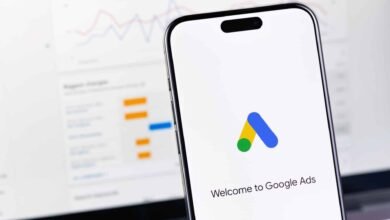Google Ads Changes How It Tracks Conversions by Default

▼ Summary
– Google Ads is changing how automatically created conversion goals become account-default starting November 17 to reduce wasted ad spend.
– Currently, new conversion actions created via the API automatically generate goals that are set as account-default and biddable across all campaigns.
– The change means a new goal will only default to account-level bidding if every other goal in its category is already set as account-default.
– Advertisers who want a new goal to be prioritized for bidding must now manually set its ‘biddable’ parameter to true.
– This update aims to prevent campaigns from optimizing toward irrelevant goals, ensuring a more performance-driven and lean goal set.
Google Ads is modifying its default approach to tracking conversions starting November 17th, a move designed to enhance campaign efficiency. The change specifically targets how automatically generated customer conversion goals are assigned at the account level, with the primary objective of reducing wasted ad spend. This adjustment ensures campaigns optimize towards the most relevant and valuable outcomes rather than diluting performance with less important targets.
Currently, when a new conversion action is created using the API, the system automatically generates a corresponding customer conversion goal. This goal is, by default, set as the account-default, making it biddable across all campaigns within that account. While this automation offers convenience, it can lead to a significant drawback: campaigns might begin optimizing for and bidding on goals that are not truly essential to the advertiser’s success. This often results in suboptimal performance and inefficient use of the advertising budget.
The upcoming update introduces a more selective process. Under the new rules, a freshly created conversion goal will only be set as the account-default automatically if every other existing goal within the same category is already configured as an account-default. For instance, if an account already has a “Purchase” goal from website conversions that is not set as the default, any new “Purchase” goals created will not automatically become account-default. This creates a much tighter control over which conversion actions campaigns are actively pursuing.
For advertisers who determine that a specific new goal should indeed be a priority for bidding, manual intervention will be required. They will need to explicitly set the `CustomerConversionGoal.biddable` parameter to “true” to ensure the goal is eligible for optimization across campaigns. This shift places greater emphasis on intentional strategy rather than relying on automatic settings.
The core benefit of this change is a more focused and effective advertising strategy. By preventing every new conversion action from automatically becoming a biddable target, Google Ads helps advertisers maintain a lean and performance-driven set of account-default goals. This reduces the risk of campaigns inadvertently optimizing for irrelevant or low-value customer actions, thereby protecting the return on investment.
In preparation for the November rollout, advertisers and teams using the API should proactively audit their existing conversion goals and review their workflow processes. Understanding this new default behavior is crucial to avoiding unexpected changes in how new conversion goals are applied and ensuring campaigns continue to perform as intended after the update takes effect.
(Source: Search Engine Land)





